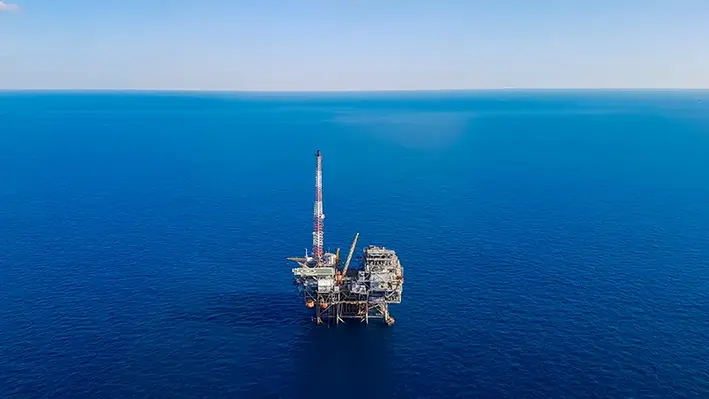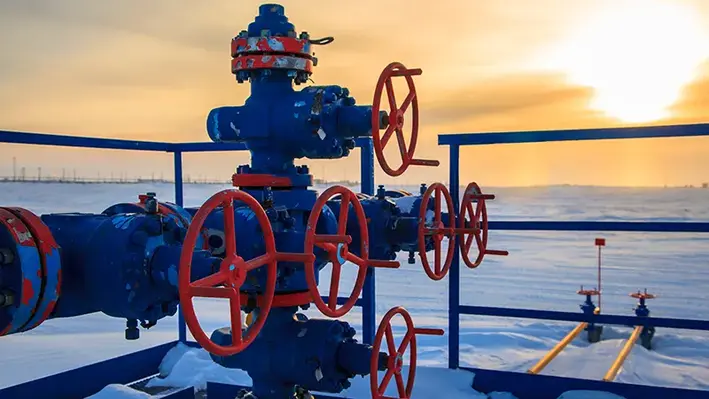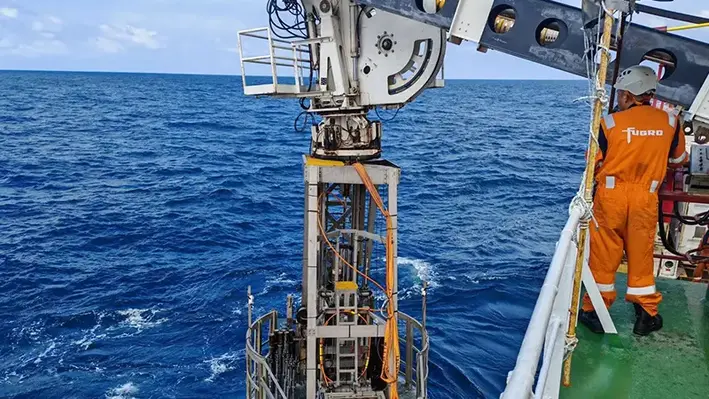
SIA Cyclit Konsultants:
Pilipishin B., PhD,
Havenson I., PhD, Gonca V., PhD, Brushtunov V., PhD, Huk I.
Our original method of prediction hydrocarbon traps is based on the theory of sedimentary cyclicity (lithmology) and on the assumption of discompaction and compaction zones: oil or gas field is formed by hydrocarbon migration from the source of their generation and the subsequent accumulation and conservation in the traps, which are located along the ways of migration.
The method can significantly improve the efficiency of geological exploration work in all their phases and stages. One of the main feature of our method is that we definitely prove where wells SHOULD NOT BE PROJECTED. It will RADICALLY REDUCE fields’ research and exploration costs.
For last 20 years we analyzed more than 50 deposits (mainly Ukraine and Khazahstan) with really positive results: overall average probability of successful wells is more than 70%.
The “Seismocyclit” group carries out processing of customer’s geophysical data and search for oil and gas pools, using its own exclusive methodology. The proposed methodology includes original methods of processing and interpretation of geophysical data, realized in form of programme-methodical complexes (PMC) “Seismocyclit” and “AFCM” (amplitude-frequency characteristic of medium).
It allows:
– To carry out construction of stacks with improved signal-to-noise ratio, eliminating regular and irregular unwanted signals, which do not respond to the principle of reciprocity in seismic survey.
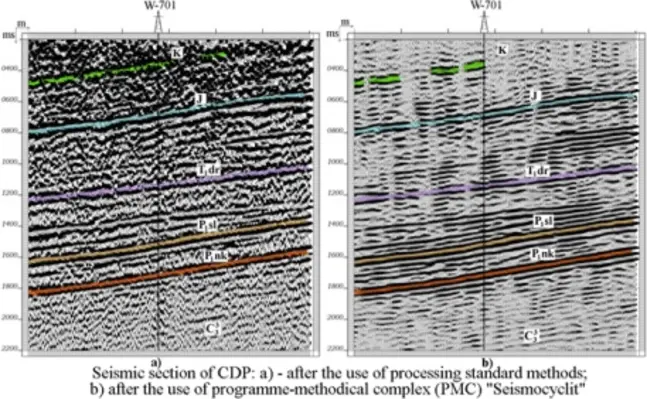
– To accomplish stratigraphic identification of the reflecting horizons, using logs in form of cyclites.
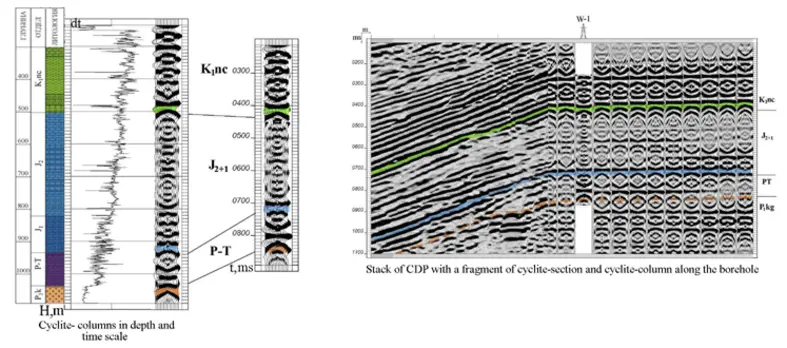
– To discover structural features of the geological section, and ways of migration – hydrocarbon delivery channels, which often coincide with tectonic failures.
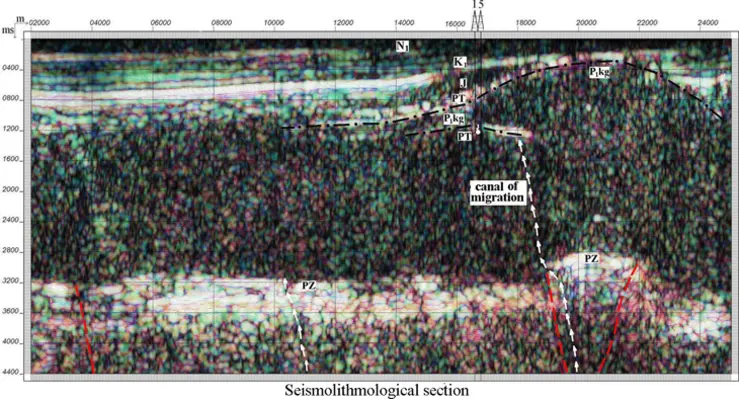
– To single out zones, where reservoirs and impermeable beds are developed. For these goals, the sections of “AFCM” (amplitude-frequency characteristic of medium) are used, which are characterized by important and distinctive feature: the calculation of colour instead of it’s assignment. Changing of the colour on the “AFCM” sections shows that the reservoir characteristics of the section change. In the given variant of calculation, horizons of the reservoirs are displayed on the “AFCM” sections in dark blue and black colour. The efficiency of this methodology is proven on a number of structures and fields connected to various types of sections. On the presented “AFCM” sections, four boreholes (red colour) are shown, which were drilled with the help of our recommendations and have given the production in terrigenous section.
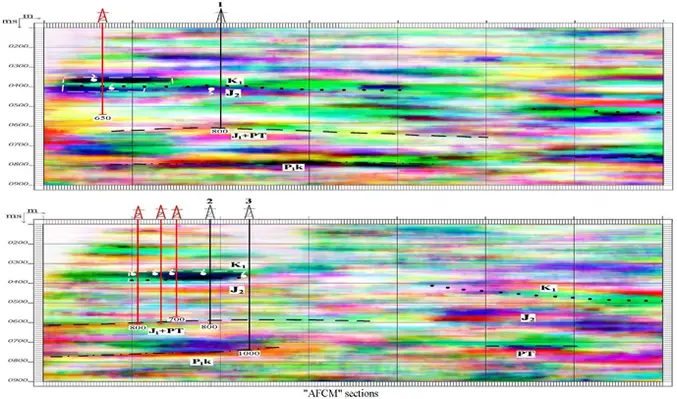
These programme-methodical complexes (PMC) “Seismocyclit” and “AFCM” – amplitude-frequency characteristic of medium have been effectively used for prognosing traps in Upper Jurassic carbonate section of Precarpathian deep.
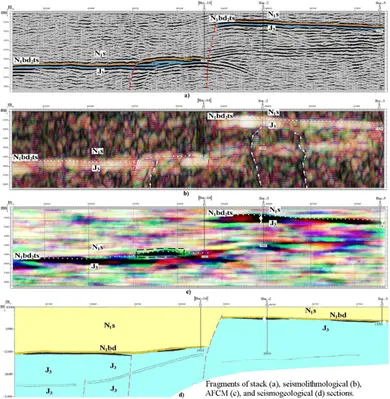
On the “AFCM” section in the upraised block of Upper Jurassic deposits, the extensive zone of reservoirs development can be pointed out, whose presence is proven by the results of boreholes testing. In the upraised part of the sinked block we can point out similar zone which is prospective.
– Additionally for prognosing the presence of hydrocarbons in trap the data of electrical prospecting can be used – it may help to calculate longitudinal electrical resistance on several deep levels. The existence of structural form and higher resistance on certain stratigraphic levels can indicate hydrocarbons’ presence in the structure.
The proposed methodology of hydrocarbon pools forecasting can be used at any stage of geological prospecting works, significantly raising their efficiency.
The following input data are necessary for our job:
-
- data of the 2D or 3D seismic survey;
- log diagrams of acoustic and (or) gamma-ray logging of the wells;
- a priori geological information on the geological structure of the investigated area.
As the result of the works the Customer will obtain the following main materials:
- At the prospecting of the new hydrocarbon fields:
-
- conclusions as to the expediency of drilling the wildcats and the indication of their location and the expected bedding depths of the producing layers;
- scheme of disposition of the detailing seismic profiles with the recommendations as to the methods of the field works carrying out.
-
- At the exploration of producing hydrocarbon fields:
-
- prognosing maps of the hydrocarbon pools in the definite interval of the depths;
- conclusions as to the presence of new objects of the prospecting in the field;
- recommendations as to the exploration works carrying out in the field with the indication of the location of new exploratory wells.
-
- At the prospecting of the new hydrocarbon fields:


